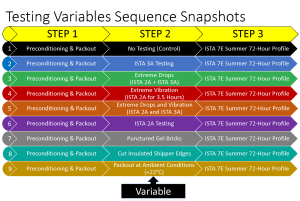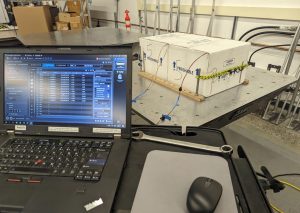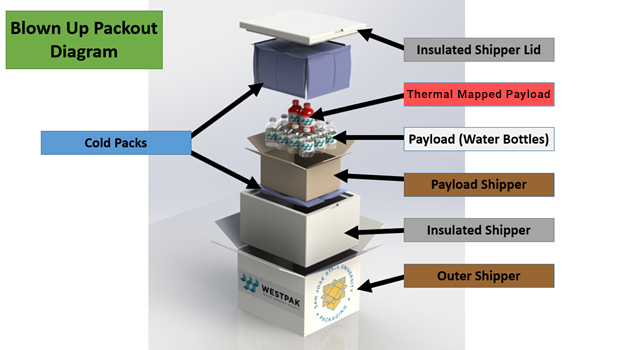In May 2023, Eric Cardiel from WESTPAK co-presented with Edmund Tang of WESTPAK and San José State University at the International Safe Transit Association (ISTA) Forum / TempPack conference in Houston, Texas, to share their findings from a recently conducted thermal study of insulated thermal packages.

The study challenged standard and universally accepted thermal mapping procedures to determine the effects of dynamic inputs (such as vibrations and drops ) on the integrity and validity of an insulated shipper.
Background
To provide some background for those unfamiliar with thermal validations, when shippers are validated to a thermal standard, it is done under static conditions; this means that the shippers are tested in the environmental chamber without any dynamic input simulating the external factors experienced in the distribution environment, which could potentially degrade the shipper’s integrity.
Scenarios
The following scenarios were conducted during the study and compared against the static (baseline control) shipper:

Testing
The testing process involved:
• Preconditioning two gel bricks and payload (water bottles),
• Subjecting thermal shippers to one of the nine scenarios listed above,
• Concluding with the ISTA 7E Summer 72-hour profile.

Results
The Summary below ranks the failure point of each scenario from best to worst for the internal payload temperature acceptance criteria of +8°C or lower:

While extrapolating the data, it can be assumed that the distribution environment will likely degrade the performance of a thermal shipper by 2% to 4% if packed out in a refrigerated chamber at +5°C. If the thermal shippers are not packed inside a refrigerated chamber, an additional thermal performance degradation of 1% to 2% can be expected. Also, if the thermal shipper experiences irregular extreme drop inputs during the distribution environment, the thermal performance of the shipper can deteriorate from 4% to 14% (vs. static shipper).
Consider the Distribution Environment
The distribution environment should always be considered when validating a thermal shipper. Often, human lives may be adversely affected if the shipper cannot maintain the payload within the required temperature range. Rigorous caution should be exercised when validating this type of package.
Further Study
Based on the feedback from the presentation, WESTPAK and San José State University are planning further collaborations. The suggestions for further study included:
• Using a lighter-weight payload instead of water bottles,
• Exploring different packaging materials,
• Combining scenarios for stacked effects,
• Using dry ice instead of gel bricks.
Stay tuned for the next installment in this study!
Cold Chain Package Testing
Ready to learn how WESTPAK can help with your Cold Chain Package Testing needs? Talk to our experts. Call (800) 830-8021 or click here to contact us.
